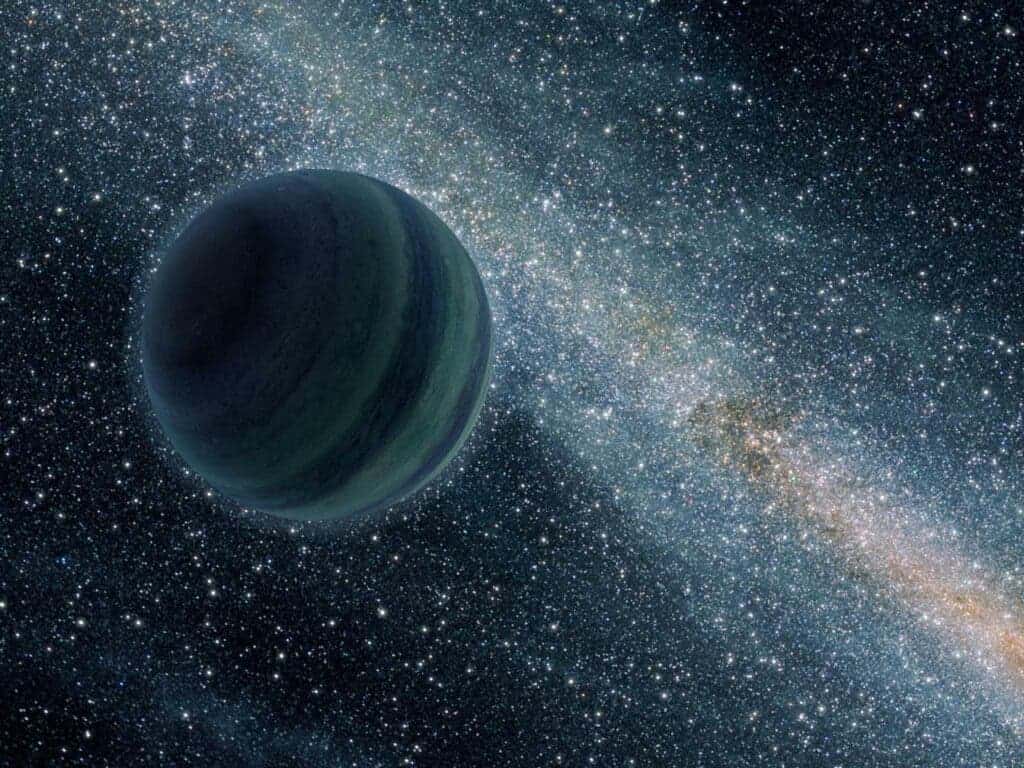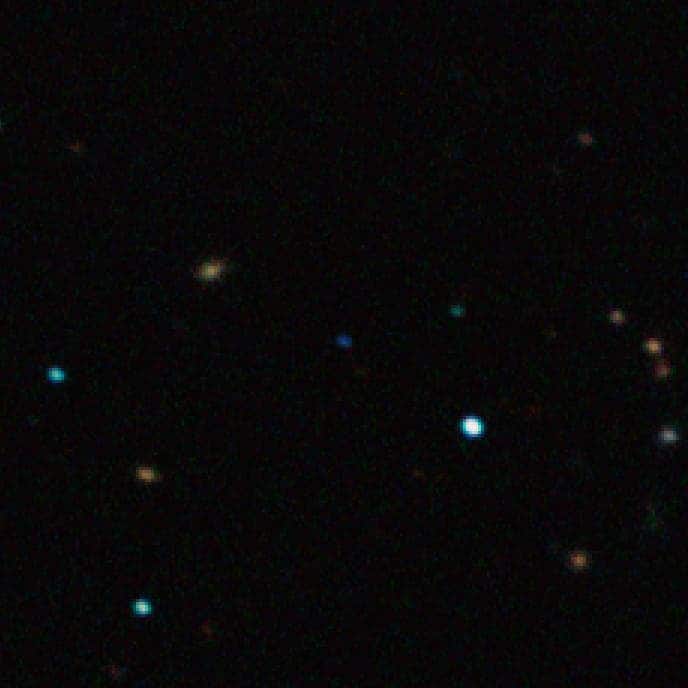Our galaxy is teeming with rogue planets either torn from their parent stars by chaotic conditions or born separate from a star. These orphan planets could be discovered en masse by an outcoming NASA project — Nancy Grace Roman Space Telescope.
The Milky Way is home to a multitude of lonely drifting objects, galactic orphans — with a mass similar to that of a planet — separated from a parent star. These nomad planets freely drift through galaxies alone, thus challenging the commonly accepted image of planets orbiting a parent star. ‘Rogue planets’ could, in fact, outnumber stars in our galaxy, a new study published in the Astronomical Journal indicates.
“Think about how crazy it is that there could be an Earth, a Mars, or a Jupiter floating all alone through the galaxy. You would have a perfect view of the night sky but stuck in an eternal night,” lead author of the study, Samson Johnson, an astronomy graduate student at The Ohio State University, tells ZME Science. “Although these planets could not host life, it is quite a place to travel to with your imagination. The possibility of rogue planets in our galaxy had not occurred to me until coming to Ohio State.”

Up to now, very few very of these orphan planets have actually been spotted by astronomers, but the authors’ simulations suggest that with the upcoming launch of NASA’s Nancy Grace Roman Space Telescope in the mid-2020s, this situation could change. Maybe, drastically so.
“We performed simulations of the upcoming Nancy Grace Roman Space Telescope (Roman) Galactic Exoplanet Survey to determine how sensitive it is to microlensing events caused by rogue planets,” Johnson says. “Roman will be good at detecting microlensing events from any type of ‘lens’ — whether it be a star or something else — because it has a large field of view and a high observational cadence.”
The team’s simulations showed that Roman could spot hundreds of these mysterious rogue planets, in the process, helping researchers identify how they came to wander the galaxy alone and indicating how great this population could be in the wider Universe.
Rogue by Name, Rogue by Nature: Mysterious and Missing
Thus far, much mystery surrounds the process that sees these planets freed from orbit around a star. The main two competing theories suggest that these stars either are thrown free of their parent star, or form in isolation. Each process would likely lead to rogue planets with radically different qualities.

“The first idea suggests that rogue planets form like planets in the Solar System, condensing from the protoplanetary disk that accompanies stars when they are born,” Johnson explains. “But as the evolution of planetary systems can be chaotic and messy, members can be ejected from the system leading to most likely rogue planets with masses similar to Mars or Earth.”
Johnson goes on to offer an alternative method of rogue planet formation that would see them form in isolation, similar to stars that form from giant collapsing gas clouds. “This formation process would likely produce objects with masses similar to Jupiter, roughly a few hundred times that of the Earth.”
“This likely can’t produce very low-mass planets — similar to the mass of the Earth. These almost certainly formed via the former process,” adds co-author Scott Gaudi, a professor of astronomy and distinguished university scholar at Ohio State. “The universe could be teeming with rogue planets and we wouldn’t even know it.”
The question is if these objects are so common, why have we spotted so few of them? “The difficulty with detecting rogue planets is that they emit essentially no light,” Gaudi explains. “Since detecting light from an object is the main tool astronomers use to find objects, rogue planets have been elusive.”
Astronomers can use a method called gravitational microlensing to spot rogue planets, but this method isn’t without its challenges, as Gaudi elucidates:
“Microlensing events are both unpredictable and exceedingly rare, and so one must monitor hundreds of millions of stars nearly continuously to detect these events,” the researcher tells ZME Science. “This requires looking at very dense stellar fields, such as those near the centre of our galaxy. It also requires a relatively large field of view.”
Additionally, as the centre of the Milky Way is highly obscured by requiring us to look at it in the near-infrared region of the electromagnetic spectrum — a task that is extremely difficult as the Earth’s atmosphere makes the sky extremely bright in near-infrared light.
“All of these points argue for a space-based, high angular resolution, wide-field, near-infrared telescope,” says Gaudi. “That’s where Roman — formally the Wide Field InfraRed Survey Telescope (WFIRST) — comes in.”
Nancy Grace Roman Space Telescope (and Einstein) to the Rescue!
The Roman telescope — named after Nancy Grace Roman, NASA’s first chief astronomer, who paved the way for space telescopes focused on the broader universe–will launch in the mid-2020s. It is set to become the first telescope that will attempt a census of rogue planets — focusing on planets in the Milky Way, between our sun and the centre of our galaxy, thus, covering some 24,000 light-years.

The team’s study consisted of simulations created to discover just how sensitive the Roman telescope could be to the microlensing events that indicate the presence of rogue planets, finding in the process, that the next generation space telescope was 10 times as sensitive as current Earth-based telescopes. This difference in sensitivity came as a surprise to the researchers themselves. “Determining just how sensitive Roman is was a real shock,” Johnson says. “It might even be able to tell us about moons that are ejected from planetary systems! We also, found a new ‘microlensing degeneracy’ in the process of the study — the subject another paper that will be coming out shortly.”
Johnson’s co-author Gaudi echoes this surprise. “I was surprised that Roman was sensitive to rogue planets with mass as low as that of Mars and that the signals were so strong,” the researcher adds. “I did not expect that before we started the simulations.”
The phenomenon that Roman will exploit to make its observations stems from a prediction made in Einstein’s theory of general relativity, that suggests that objects with mass ‘warp’ the fabric of space around them. The most common analogy used to explain this phenomenon is ‘dents’ created in a stretched rubber sheet by placing objects of varying mass upon it. The heavier the object — thus the greater the mass — the larger the dent.
This warping of space isn’t just responsible for the orbits of planets, it also curves the paths of light rays, the straight paths curving as they pass the ‘dents’ in space. This means that light from a background source is bent by the effect of the mass of a foreground object. The effect has recently been used to spot a distant Milky Way ‘look alike’. But in that case, and in the case of many gravitational lensing events, the intervening object was a galaxy, not a rogue planet, and thus was a much less subtle, more long-lasting, and thus less hard to detect effect than ‘microlensing’ caused by a rogue planet.
“Essentially, a microlensing event happens when a foreground object — in this case, a rogue planet — comes into very close alignment with a background star. The gravity of the foreground object focuses light from the background star, causing it to be magnified,” Gaudi says. “The magnification increases as the foreground object comes into alignment with the background star, and then decreases as the foreground object moves away from the background star.”
As Johnson points out, microlensing is an important and exciting way to study exoplanets — planets outside the solar system — but when coupled with Roman, it becomes key to spotting planetary orphans.
“Roman really is our best bet to find these objects. The next best thing would be Roman 2.0 — with a larger field of view and higher cadence,” the researcher tells ZME, stating that rogue planets are just part of the bigger picture that this forthcoming space-based telescope could allow us to see. “I’m hoping to do as much work with Roman as possible. The next big project is determining what Roman will be able to teach us about the frequency of Earth-analogs — Earth-mass planets in the habitable zones of Sun-like stars.”
Original Research
Johnson. S. A., Penny. M, Gaudi. B. S, et al, ‘Predictions of the Nancy Grace Roman Space Telescope Galactic Exoplanet Survey. II. Free-floating Planet Detection Rates*,’ The Astronomical Journal, [2020].






